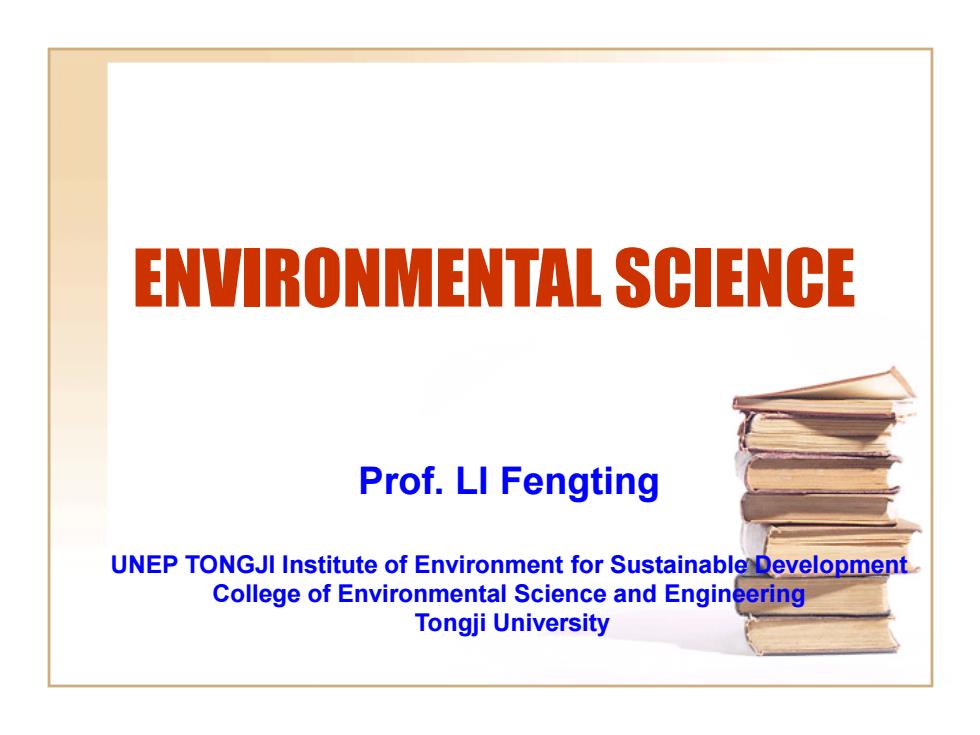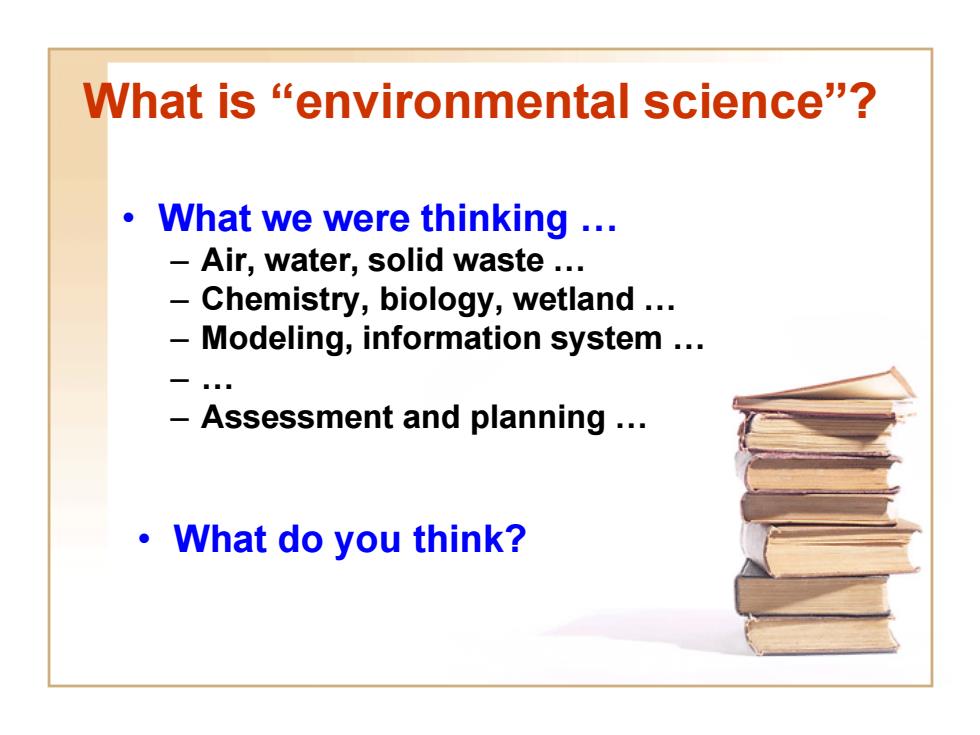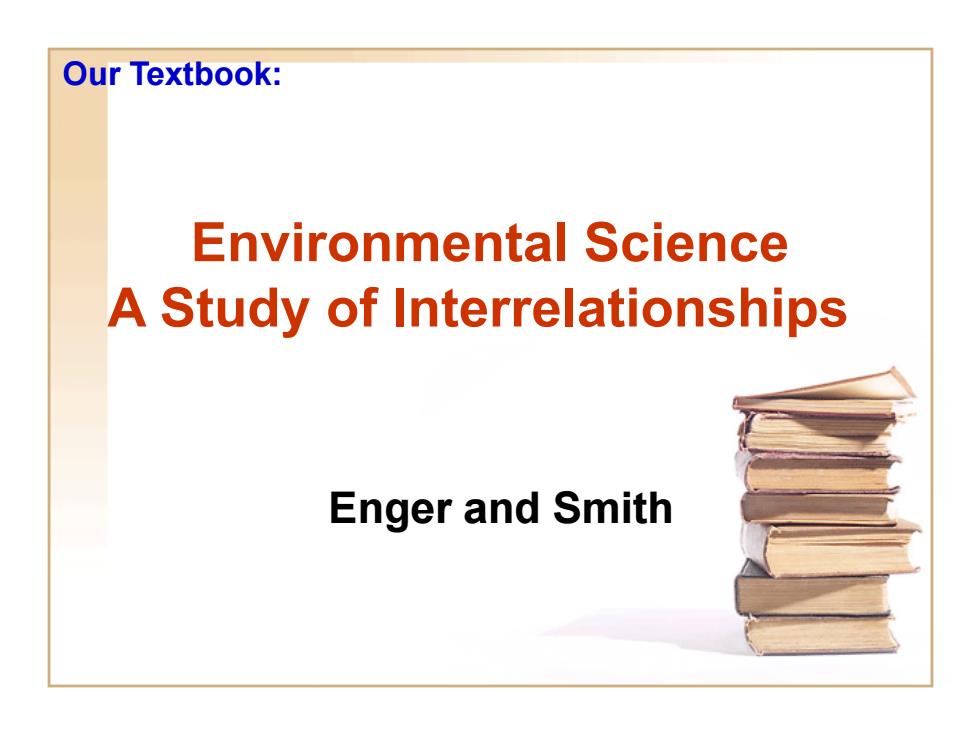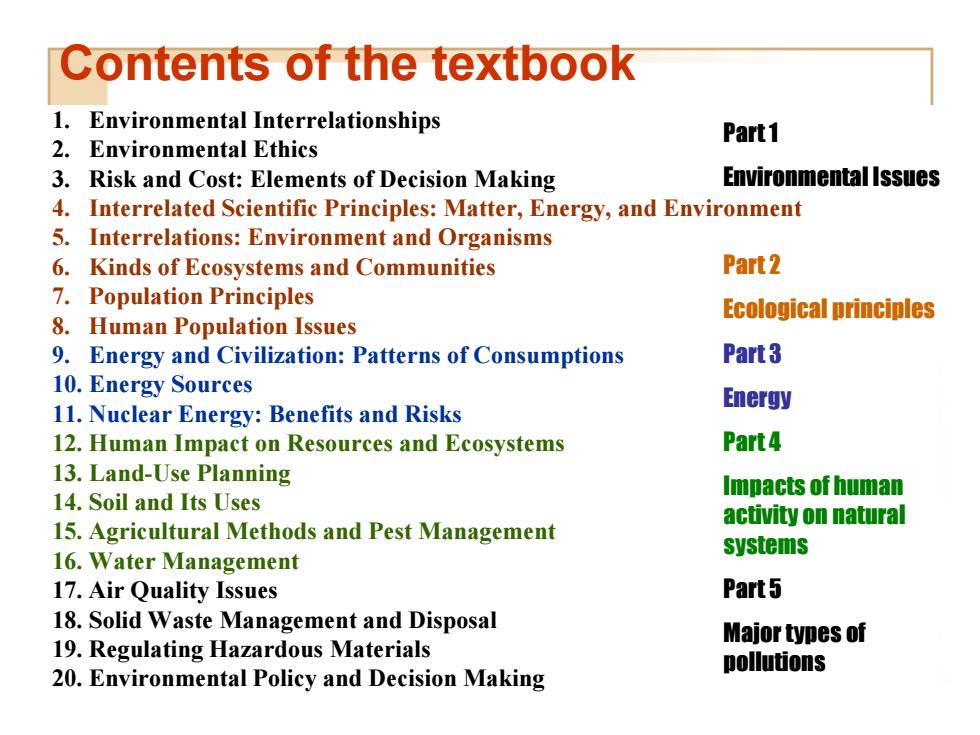
ENVIRONMENTAL SCIENGE Prof.LI Fengting UNEP TONGJI Institute of Environment for Sustainable Development College of Environmental Science and Engineering Tongji University
ENVIRONMENTAL SCIENCE Prof. LI Fengting UNEP TONGJI Institute of Environment for Sustainable Development College of Environmental Science and Engineering Tongji University

What is "environmental science"? What we were thinking .. -Air,water,solid waste... Chemistry,biology,wetland... Modeling,information system .. Assessment and planning .. ·What do you think?
What is “environmental science”? • What we were thinking … – Air, water, solid waste … – Chemistry, biology, wetland … – Modeling, information system … – … – Assessment and planning … • What do you think?

According to Wikipedia: Environmental science is an interdisciplinary academic field that integrates physical and biological sciences,(including physics,chemistry, biology,soil science,geology,and geography)to the study of the environment,and the solution of environmental problems.Environmental science provides an integrated, quantitative,and interdisciplinary approach to the study of environmental systems
According to Wikipedia: • Environmental science is an interdisciplinary academic field that integrates physical and biological sciences, (including physics, chemistry, biology, soil science, geology, and geography) to the study of the environment, and the solution of environmental problems. Environmental science provides an integrated, quantitative, and interdisciplinary approach to the study of environmental systems

Our Textbook: Environmental Science A Study of Interrelationships Enger and Smith
Environmental Science A Study of Interrelationships Enger and Smith Our Textbook:

Contents of the textbook 1.Environmental Interrelationships 2.Environmental Ethics Part1 3.Risk and Cost:Elements of Decision Making Environmental Issues 4.Interrelated Scientific Principles:Matter,Energy,and Environment 5.Interrelations:Environment and Organisms 6.Kinds of Ecosystems and Communities Part2 7.Population Principles Ecological principles 8.Human Population Issues 9.Energy and Civilization:Patterns of Consumptions Part3 10.Energy Sources 11.Nuclear Energy:Benefits and Risks Energy 12.Human Impact on Resources and Ecosystems Part4 13.Land-Use Planning Impacts of human 14.Soil and Its Uses activity on natural 15.Agricultural Methods and Pest Management systems 16.Water Management 17.Air Quality Issues Part5 18.Solid Waste Management and Disposal 19.Regulating Hazardous Materials Major types of pollutions 20.Environmental Policy and Decision Making
Contents of the textbook 1. Environmental Interrelationships 2. Environmental Ethics 3. Risk and Cost: Elements of Decision Making 4. Interrelated Scientific Principles: Matter, Energy, and Environment 5. Interrelations: Environment and Organisms 6. Kinds of Ecosystems and Communities 7. Population Principles 8. Human Population Issues 9. Energy and Civilization: Patterns of Consumptions 10. Energy Sources 11. Nuclear Energy: Benefits and Risks 12. Human Impact on Resources and Ecosystems 13. Land-Use Planning 14. Soil and Its Uses 15. Agricultural Methods and Pest Management 16. Water Management 17. Air Quality Issues 18. Solid Waste Management and Disposal 19. Regulating Hazardous Materials 20. Environmental Policy and Decision Making Part 1 Environmental Issues Part 2 Ecological principles Part 3 Energy Part 4 Impacts of human activity on natural systems Part 5 Major types of pollutions